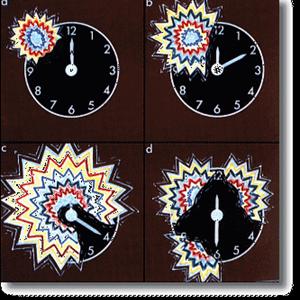-
When is a Headache a Migraine?

Migraine is a neurological disease characterized by recurrent moderate to severe headaches often in association with a number of autonomic nervous system symptoms.
• Typically the headache affects one half of the head, is pulsating in nature, and lasts from 2 to 72 hours. Associated symptoms may include nausea, vomiting, and sensitivity to light, sound, or smell.
• The pain is generally made worse by physical activity.
• Up to one-third of people with migraine headaches perceive an aura: a transient visual, sensory, language, or motor disturbance which signals that the headache will soon occur.
• Occasionally an aura can occur with little or no headache following it.
• Migraines are believed to be due to a mixture of environmental and genetic factors.
• About two-thirds of cases run in families.
• Changing hormone levels may also play a role, as migraines affect slightly more boys than girls before puberty, but about two to three times more women than men. The risk of migraines usually decreases during pregnancy.
• The exact mechanisms of migraine are not known. It is, however, believed to be a neurovascular disorder. The primary theory is related to increased excitability of the cerebral cortex and abnormal control of pain neurons in the trigeminal nucleus of the brain-stem.Stages of a migraine
• The prodrome, which occurs hours or days before the headache, occur in about 60% of those with migraines, may include altered mood, irritability, depression or euphoria, fatigue, craving for certain food(s), stiff muscles (especially in the neck), constipation or diarrhea, and sensitivity to smells or noise. This may occur in those with either migraine with aura or migraine without aura.
• The aura, which immediately precedes the headache, appear gradually over a number of minutes and generally last less than 60 minutes, they occur in up to 99% of cases and in more than 50% of cases are not accompanied by sensory or motor effects. Vision disturbances often consist of a scintillating scotoma (an area of partial alteration in the field of vision which flickers and may interfere with a person’s ability to read or drive). These typically start near the centre of vision and then spread out to the sides with zigzagging lines which have been described as looking like fortifications or walls of a castle. Usually the lines are in black and white but some people also see coloured lines. Some people lose part of their field of vision known as hemianopsia while others experience blurring.
• Sensory aurae are the second most common type; they occur in 30–40% of people with auras. Often a feeling of pins-and-needles begins on one side in the hand and arm and spreads to the nose–mouth area on the same side. Numbness usually occurs after the tingling has passed with a loss of position sense. Other symptoms of the aura phase can include speech or language disturbances, world spinning, and less commonly motor problems these indicate that this is a hemiplegic migraine, and weakness often lasts longer than one hour unlike other auras. Auditory hallucinations or delusions have also been described.
• Rarely, an aura occurs without a subsequent headache, known as an acephalgic migraine or silent migraine
• The pain phase, Classically the headache is unilateral, throbbing, and moderate to severe in intensity. It usually comes on gradually and is aggravated by physical activity. In more than 40% of cases, however, the pain may be bilateral and neck pain is commonly associated with it. Bilateral pain is particularly common in those who have migraines without an aura. The pain is frequently accompanied by nausea, vomiting, sensitivity to light, sensitivity to sound, sensitivity to smells, fatigue and irritability
• The frequency of attacks is variable, from a few in a lifetime to several a week, with the average being about one a month.
• The postdrome, following the end of a migraine attack . Many report a sore feeling in the area where the migraine was, and some report impaired thinking for a few days after the headache has passed. The patient may feel tired or “hung over” and have head pain, cognitive difficulties, gastrointestinal symptoms, mood changes, and weakness. “Some people feel unusually refreshed or euphoric after an attack, whereas others note depression and malaise.” For some individuals this can vary each time.



